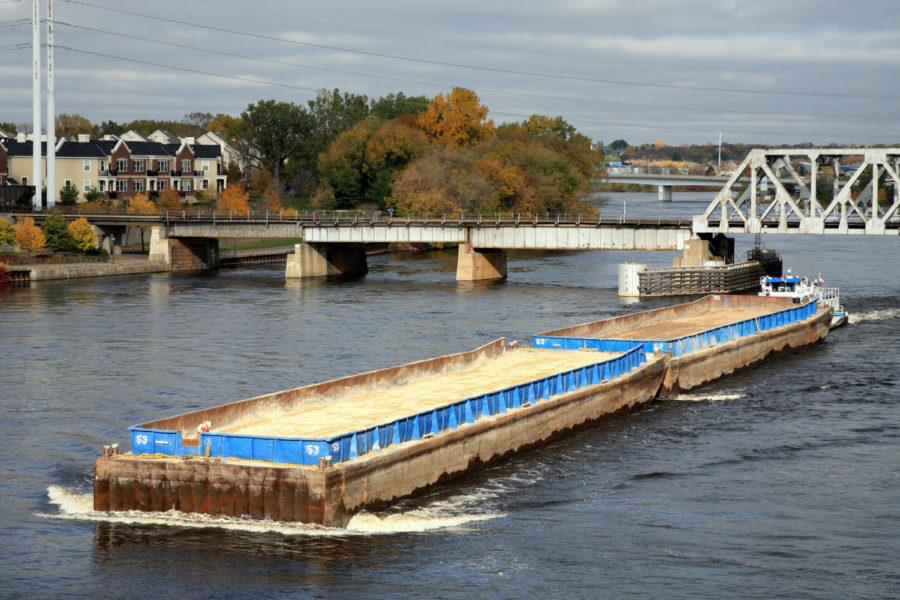Lauver: Water — the next resource that might create a world war
Photo courtesy of Flickr/mrjoro
Opinion: Lauver 11/26
November 26, 2012
Seven days. That’s the average amount of time a person can live without water. As Americans we take water for granted, turning our faucets on daily to drink treated water. We enjoy bottled water from the springs of the Rocky Mountains and the islands of Fiji. Even so, water and its uses are causing a firestorm of controversy as we experience drought in the Midwest and issues over uses at a local, national and global level.
When looking close to home we have experienced one of the worst droughts since 1988 creating a heightened awareness amongst urban and rural groups. During Fall Break, I heard many discussions about the dry conditions. If current weather is any indication, it is not looking like we’re not going to see relief soon. Mentions of the “Dust Bowl” seem to be closer to reality as precious top soil is being blown away like chalk from a professor’s hand.
Nationally, water rights are causing controversy in states such as California, where farmers need the water to quench the thirst of their plants and animals, while increasing pressure from sprawling cities are demanding more water.
Additionally, with increasing commodity prices, specifically corn, we are seeing more land in states like Nebraska, South Dakota and Kansas being converted from grassland into farmland. These farms do not receive an adequate amount of rain to grow crops, so they must pull water from aquifers such as the Ogallala aquifer, which is the largest underground source of freshwater in the world.
The problem is this aquifer is being pumped dry due to dry conditions and is not being replenished. We must work together to manage a safe, secure water supply while protecting national food security. If we lose this resource beneath the ground stretching from South Dakota to Texas, we will see a collapse of rural populations and crop production.
Where do we go from here?
We must begin utilizing this resource to the best of our ability. If we are able to efficiently manage water at the urban and rural level we can take these methods abroad. There are many uses for water beyond drinking that can be exploited around the world.
If you’ve been on the Mississippi River, you know the lock and dam system is what keeps our barges floating to create economic prosperity. Unfortunately, many of our locks and dams need to be renovated or replaced. They are crucial to transport maintaining a constant depth of water for barges to transport grain. If these locks and dams are shut down, we will lose the ease of transport enabling us to be a world power in food production.
We are some of the luckiest grain producers in the world with the mighty Mississippi and Missouri rivers bordering our great state — the lifeblood of barge traffic transporting our grain to the Gulf of Mexico for export. In fact, we send around $12 billion worth of goods down the Mississippi every year. This is going to be increasingly important as the stress on the water supply increases.
Furthermore, around $1 billion bushels of grain are shipped down the Mississippi to feed hungry mouths around the world. Closer attention to water transportation, and specifically the locks and dams, on Capitol Hill would ensure our system’s efficiency.
What about the global level?
When looking at the world’s water utilization, about 70 percent is used for agricultural purposes. It is not so easy for farmers and animals to access water. Fresh water is not always available to people in third world countries. People often carry buckets of water for miles to water their thirsty family, plants and animals.
As we continue to see global climate change and a growing population, the stress on our freshwater supply will continue to raise concerns. This stress is going to ultimately cause such instability that nations may resort to war for their most precious resource.
We must take a position of leadership and share our water management’s practices with other countries. Fortunately, our government has already taken a position of leadership with this real threat looming in the next 50 years by creating the U.S. Water Partnership. Their mission is to create a water-secure world, committing $610 million dollars.
From a standpoint of terrorism on water security we must be watchful of purposeful attacks on water and the infrastructure. If terrorists are able to cause harm by contaminating water or destructing dams we might see irrational acts of retaliation.
In summary, we need heightened awareness to our water supply at home and abroad. If we do not take a proactive approach, this resource we take for granted might create an unforeseen war that could be avoided with collaboration, preparation and ingenuity.







